If you haven’t read Part I of this two part series you might go back and do so HERE. In that post we discuss reasons for wanting to find better ways to manage this aggressive species and where we discuss some situations where haying or discing affected sites have benefited local ecology.
In late October I was able to spend a few hours with Tim Miller and his colleague, Bruce Henry (FWS Forest Ecologist), walking through a portion of the Upper Mississippi National Wildlife Refuge that is under grazing contract with a neighboring cattle farmer. This ~76 Acre site located by Stoddard, WI is annually grazed on and off during the summer (June through October) by a dozen or so (sometimes more) cows.
In contrast to some of the neighboring overgrazed pastures, this particular piece of Refuge land seemed to be in great shape (lacking the characteristic short-cropped ‘golf-course’ pasture look). Like the sites we had toured before, this site had a strong reed canary grass presence but, here too, it now seemed to be quite subdued. When comparing the RCG on either side of the barbed wire fence the contrast was clear: extensive, matting layers of RCG on the ungrazed side and a mixed, lumpy texture with more sedges and wildflowers on the grazed side. Here are some photos to show the comaparison:
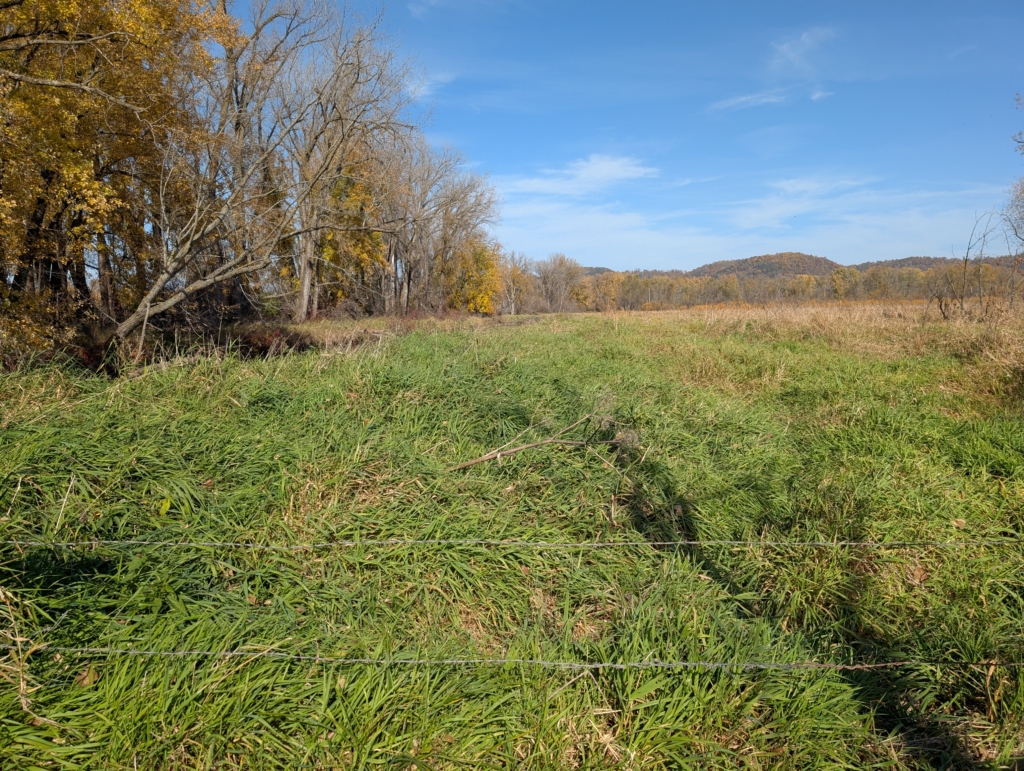
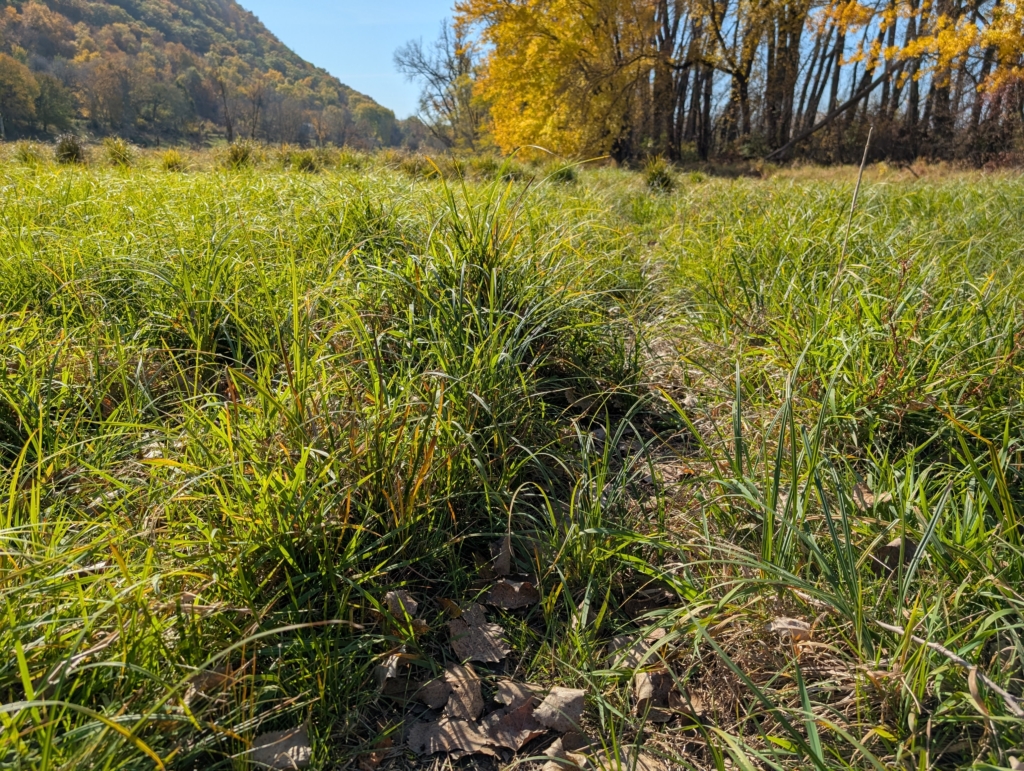
We observed numerous wetland sedges including some favorites including diminutive Eleocharis species and patches of Carex stricta (Tussock Sedge), which is a species prone to developing into distinct tall hummocks that make foot (and hoof) travel tricky. The cattle seem to nibble at the sedges, but tend to prefer the true grasses. Forbs (wildflowers) that seemed to really benefit from the grazing regime on this site included Great Blue Lobelia, Cardinal Flower, Blue Vervain and Swamp Milkweed. These are all important species for pollinators and hummingbirds that seem to do well with a moderate amount of soil disturbance and that tend to diminish when in dense stands of RCG.
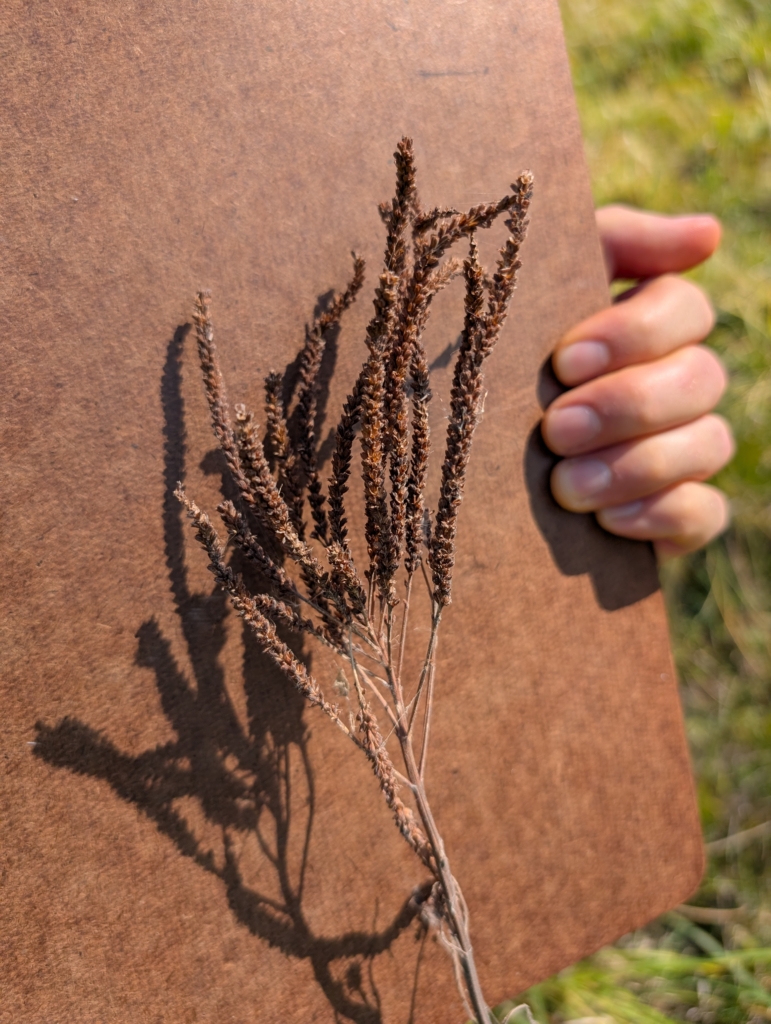
Instead of wading through a monoculture of reed canary dragging at our ankles with every step, Tim, Bruce and I were able to casually stroll around, sometimes even choosing to follow the meandering cattle trails. It was clear that other animal species were also taking advantage of the space. There were coyote and raccoon tracks on the trails and we even found some crayfish burrows next to the vegetation-cleared watering hole. A good friend of mine would also be sure to comment that turtles climbing from waterways in search of egg-laying spots will also make good use of clear gradual slopes and open trails for their own travel.
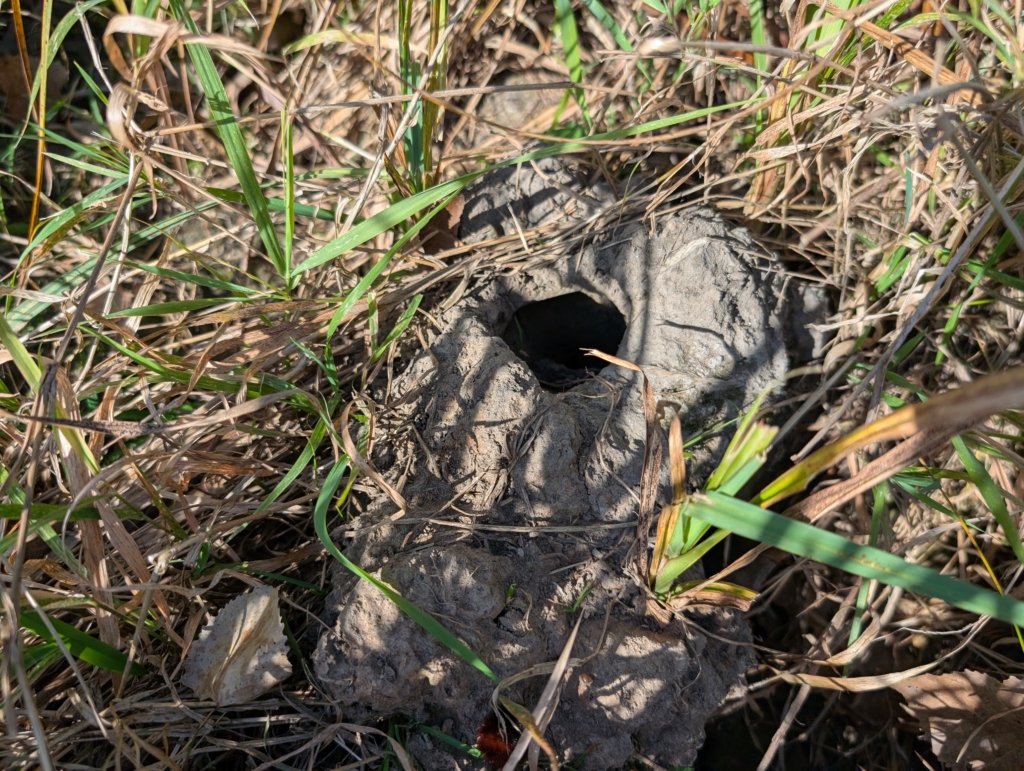
We spent quite a bit of time at this site discussing the variability of grazing practices (and practitioners), and how this site could so easily be overgrazed. This site was clearly benefiting from the low stocking rates that the contracted neighbor-farmer was using. We discussed the bare muddy spots along the river that the cattle were using for their drinking purposes. Some observers might critique the exposed soil as a liability. I offered that these spaces might be acceptable allowances, as they provide opportunities for creatures like those already mentioned. In contrast to this exposed ground, the other shoreline spaces were mostly short cliff faces with vegetation only on the top and soil that caves away more easily in high water events. The cattle on this site are actually reshaping these shorelines into more gradual slopes that reconnect the waterway with its floodplain seamlessly. The best stream restoration projects in our area tend to implement earth moving practices that mimic similar effects on a broad scale, only with heavy equipment.
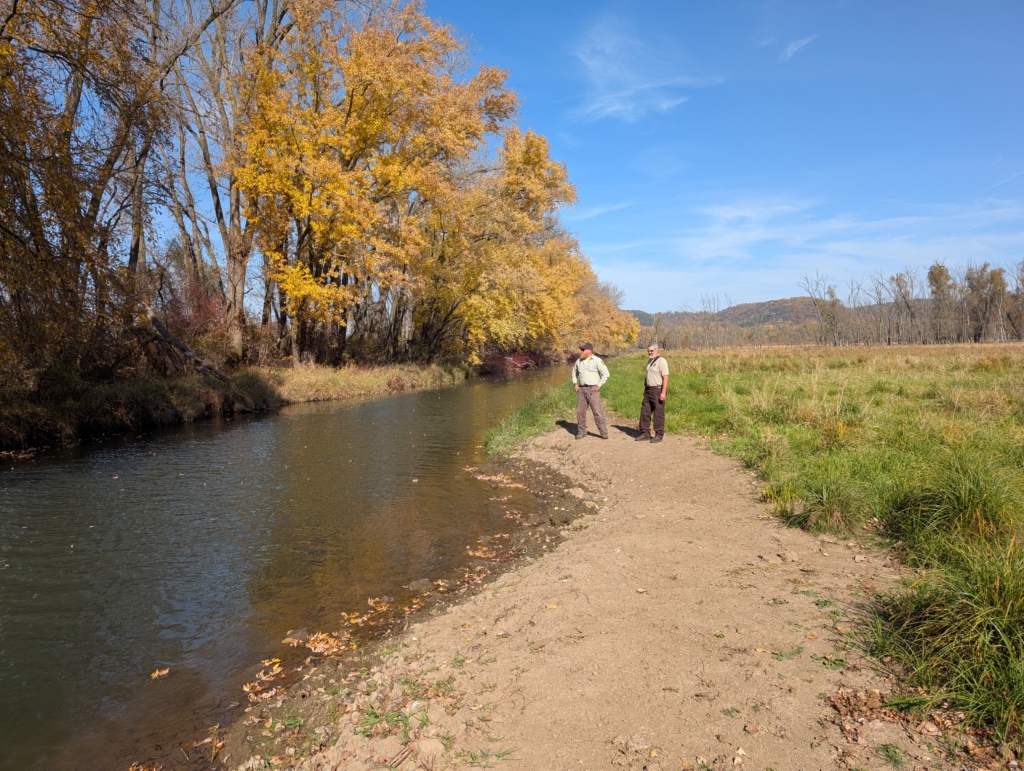
We discussed how, if capacity allowed, it might eventually be beneficial to place small sections of exclusionary fencing around disturbed watering spots, allowing these spaces to revegetate and putting the cattle to work on some adjacent portions of streambank. At some point the entire shoreline might be improved!
The greatest hindrance to implementing this type of grazing practice on a broad scale is a lack of cattle farmers in close proximity to refuge lands. There are countless acres of floodplain inundated with RCG that have no convenient options for grazing. It can be expensive and time consuming to haul livestock into sites like these and it often seems impractical. One additional risk is that of seasonal flooding events which can wreak havoc on fencing and sometimes even send animals floating downstream. But in spite of the few risks, the clear benefits of the cattle grazing effects on this site make me wonder how we could do this on a broader scale. Maybe we need more refuge neighbors willing to try grazing a few cows… Maybe we need to incentivize farmer-producers to haul animals into sites like these… Maybe the idea of having a community-subsidized product like “prairie fed” or “conservation beef” might help a bit with the economics…
Unfortunately, common practice seems to be simply to give up on large swaths of RCG invaded Refuge land. But I’m certainly glad there are a few agencies that are willing to implement experiments like this. Let’s do more of that.
We will try to get out and visit these sites during the growing season next year. Thanks again to Tim and Bruce for their time and conversation!

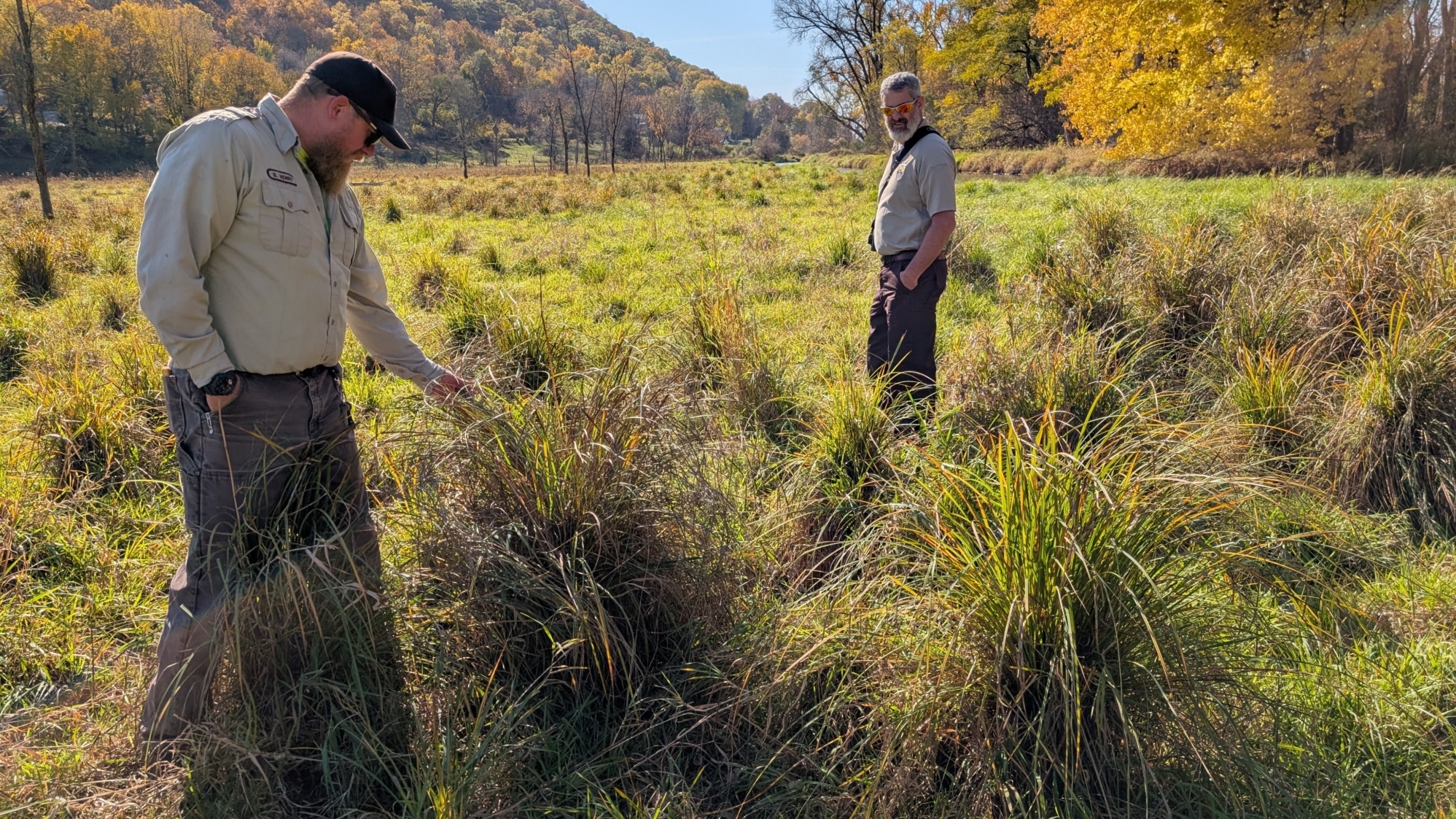



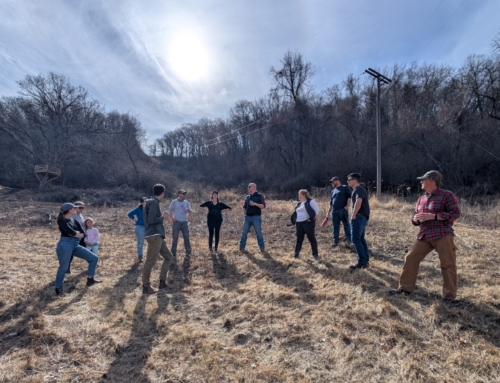
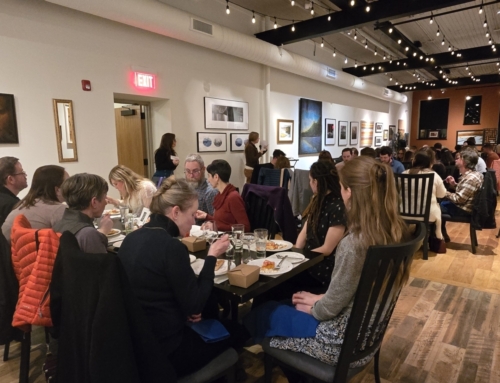

Leave A Comment